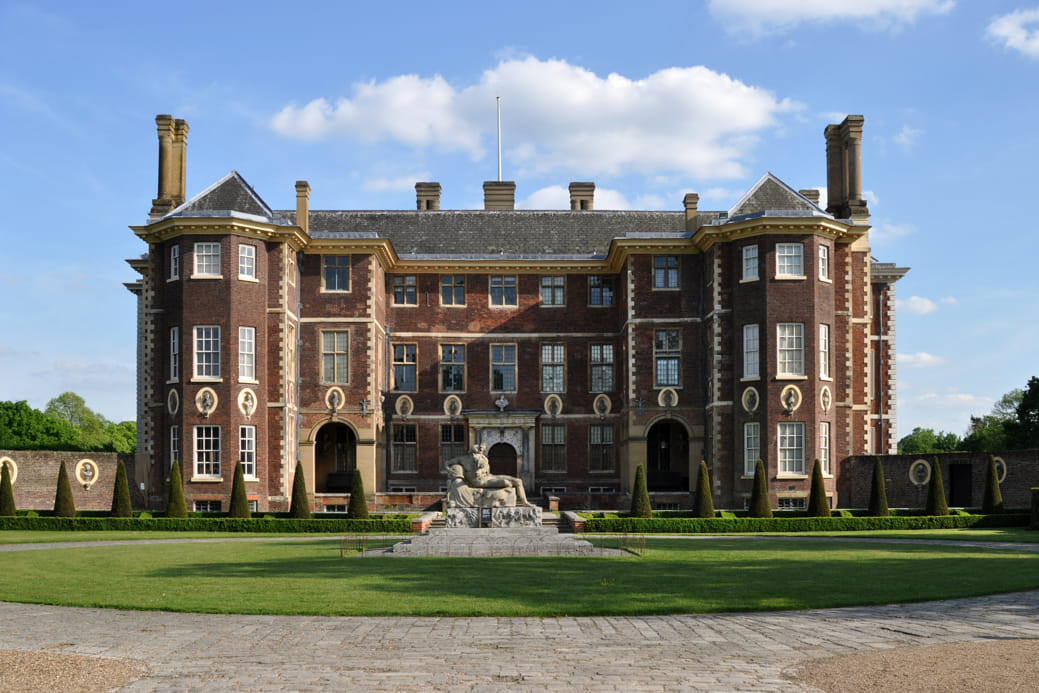Richmond Ham’s Changing Landscape: A Guide to Property Change of Use
In the peaceful and picturesque enclave of Richmond Ham, nestled between the lush expanses of Richmond Park and the gentle meanders of the River Thames, change is often subtle, but increasingly significant. Known for its historical architecture, serene ambiance, and close-knit community, Richmond Ham is evolving as property owners, developers, and entrepreneurs explore new ways to repurpose buildings. The concept of Change of Use is at the heart of this transformation.
Whether you’re a seasoned investor or a local homeowner looking to maximize the potential of your property, understanding the Change of Use process is essential. This shift, involving the conversion of a building’s designated purpose—from residential to commercial or vice versa—can lead to exciting opportunities. Yet, Richmond Ham’s delicate balance of heritage and modernity means that this journey requires thoughtful planning, regulatory understanding, and a creative vision.
Let’s dive into how you can navigate the Change of Use process in Richmond Ham, opening up new possibilities for your property.
What is Change of Use?
Change of Use refers to the legal reclassification of a building or part of a building for a different purpose than it was originally intended. In the UK, buildings are classified into use classes—for example, Class C3 for residential properties and Class E for commercial spaces like shops or offices. Changing a property’s use often requires planning permission, but certain changes fall under Permitted Development Rights and may not need formal approval.
For instance, converting a small office into residential flats or turning a disused warehouse into a trendy café might be permissible under specific guidelines. However, Richmond Ham’s status as a historic and conservation-sensitive area means extra care must be taken when altering its character.
Richmond Ham: A Place of Timeless Charm and Modern Potential
Richmond Ham has long been valued for its historical significance, with Georgian terraces, Victorian townhouses, and Edwardian villas creating a unique aesthetic. This makes it both a desirable location for new ventures and a place where changes are carefully scrutinized. The area is dotted with listed buildings and sits close to Ham Common, meaning that planning permissions for Change of Use will always be viewed through the lens of preserving Richmond Ham’s heritage.
However, that doesn’t mean it’s an impossible task. If done correctly, Change of Use can enhance both the property and the community. For example, converting older homes into small boutique hotels or cafes can draw tourism while preserving the charming facades that make Richmond Ham special. Similarly, repurposing unused commercial spaces into residential flats could help meet local housing demands without disrupting the neighborhood’s quiet allure.
How to Navigate Change of Use in Richmond Ham
Converting a property’s use may sound like a straightforward process, but it involves several important steps. In Richmond Ham, these steps are particularly vital due to the area’s conservation status and architectural heritage.
1. Understanding Use Classes
Before anything else, you’ll need to understand the current use class of your property. This will determine whether you need planning permission for the intended change. The most common classes in Richmond Ham include:
- Class C3: Residential dwellings such as homes or flats.
- Class E: Commercial properties, including offices, shops, and restaurants.
- Sui Generis: Buildings that don’t fit into a standard category, such as pubs, nightclubs, and cinemas.
Once you know your building’s class, you can assess whether the new use falls under Permitted Development or if it will require a formal application.
2. Investigating Permitted Development Rights
Some Changes of Use don’t require planning permission thanks to Permitted Development Rights. These are pre-approved changes that the government allows, provided certain conditions are met. For example, converting an office space (Class E) into residential flats (Class C3) might not require permission if it meets specific size limits and doesn’t involve major structural changes.
However, in Richmond Ham’s conservation areas or with listed buildings, Permitted Development Rights are often more restricted. You’ll likely need to consult with the local planning authority to confirm whether your project qualifies.
3. Preparing Your Planning Application
If your Change of Use isn’t covered by Permitted Development, you’ll need to apply for planning permission. The process involves submitting detailed plans that show how the building will be adapted for its new purpose. In Richmond Ham, you’ll also need to consider how your project will fit within the broader landscape of heritage preservation.
Your planning application may need to include:
- Architectural designs showing how the exterior and interior will change.
- A heritage impact statement if the building is listed or within a conservation zone.
- A community consultation plan, especially if the change will significantly alter the local area.
4. Heritage and Conservation Considerations
One of the most important aspects of any property development in Richmond Ham is ensuring the heritage and character of the area remain intact. Richmond Ham’s historical buildings aren’t just homes—they’re part of the neighborhood’s identity. As such, any significant changes will need to demonstrate how they respect and enhance this character.
This might mean keeping facades intact, using traditional materials, or working closely with conservation officers to ensure your project meets local standards.
5. Engaging with the Community
Richmond Ham is a community with deep roots, and any substantial change is likely to attract interest from residents. Engaging with the local community early on can help address concerns and build support for your project. Showing how your Change of Use will benefit the area—whether through new amenities, jobs, or housing—can smooth the path to approval.
Popular Change of Use Projects in Richmond Ham
Richmond Ham offers a wide range of opportunities for Change of Use projects. Some of the most common transformations include:
Office to Residential Conversions: With remote work becoming more common, many underused office spaces can be converted into high-demand residential flats. This is particularly appealing in a desirable location like Richmond Ham, where housing is in demand.
Residential to Commercial Spaces: Homes along Ham Street or Ham Parade may offer the potential for conversion into cozy shops, tearooms, or boutiques, attracting both locals and tourists.
Vacant Retail to Mixed-Use Spaces: Many older retail units can be adapted into multi-purpose spaces that include both commercial and residential elements. This not only preserves the commercial vibrancy of the area but also offers practical living spaces.
Key Challenges and Considerations
While the potential for Change of Use in Richmond Ham is enticing, there are several challenges to consider:
Heritage Restrictions: Listed buildings or properties in conservation areas come with additional regulations that can limit what changes can be made. It’s important to work closely with the local planning authority and, if necessary, heritage consultants.
Environmental Impact: Richmond Ham’s proximity to the River Thames and large green spaces means any development must carefully consider its environmental impact. Energy-efficient building practices and sustainable materials will likely be a priority.
Traffic and Infrastructure: Changing the use of a property from residential to commercial could lead to increased traffic or demand for local services. These impacts will need to be addressed in your planning application.
Final Thoughts
Change of Use in Richmond Ham offers a unique opportunity to transform properties while contributing to the area’s evolving landscape. Whether you’re looking to create new homes, develop a thriving business, or preserve a piece of history, the potential is vast. By navigating the planning process thoughtfully and engaging with the community, you can unlock the hidden value in Richmond Ham’s properties while maintaining the charm and character that make this neighborhood so special.
Richmond Ham is changing, but in ways that preserve its timeless beauty and enhance its future potential.





